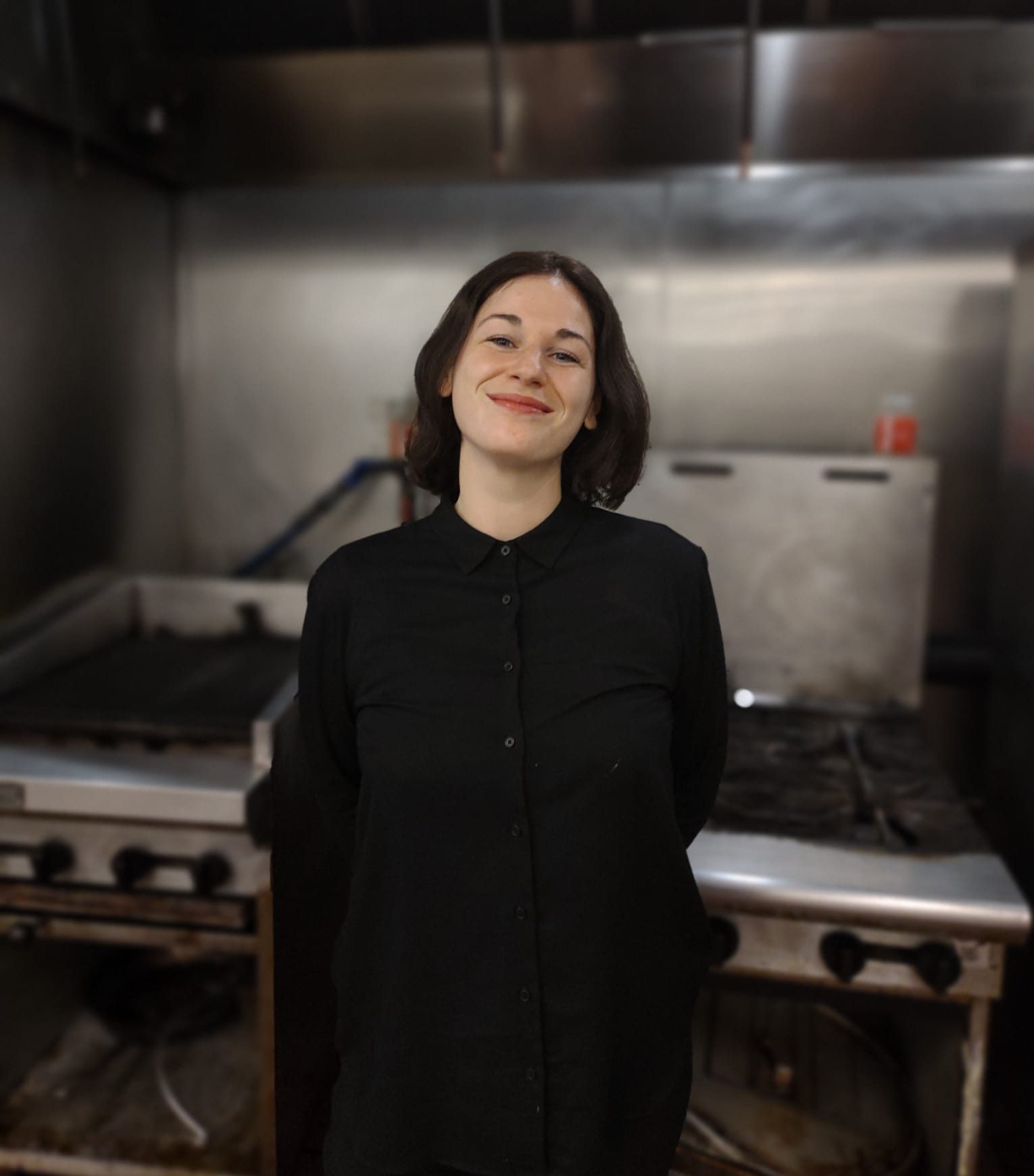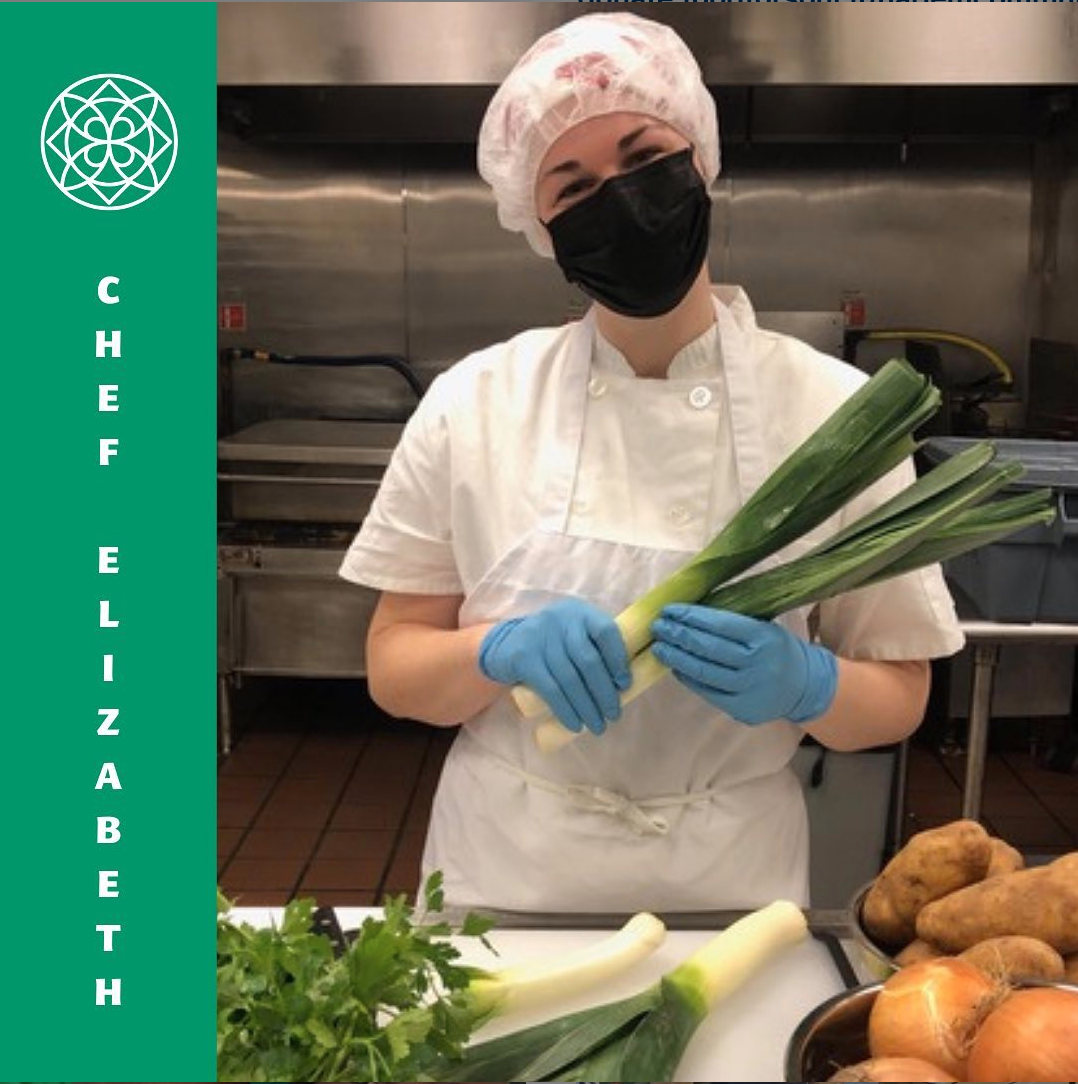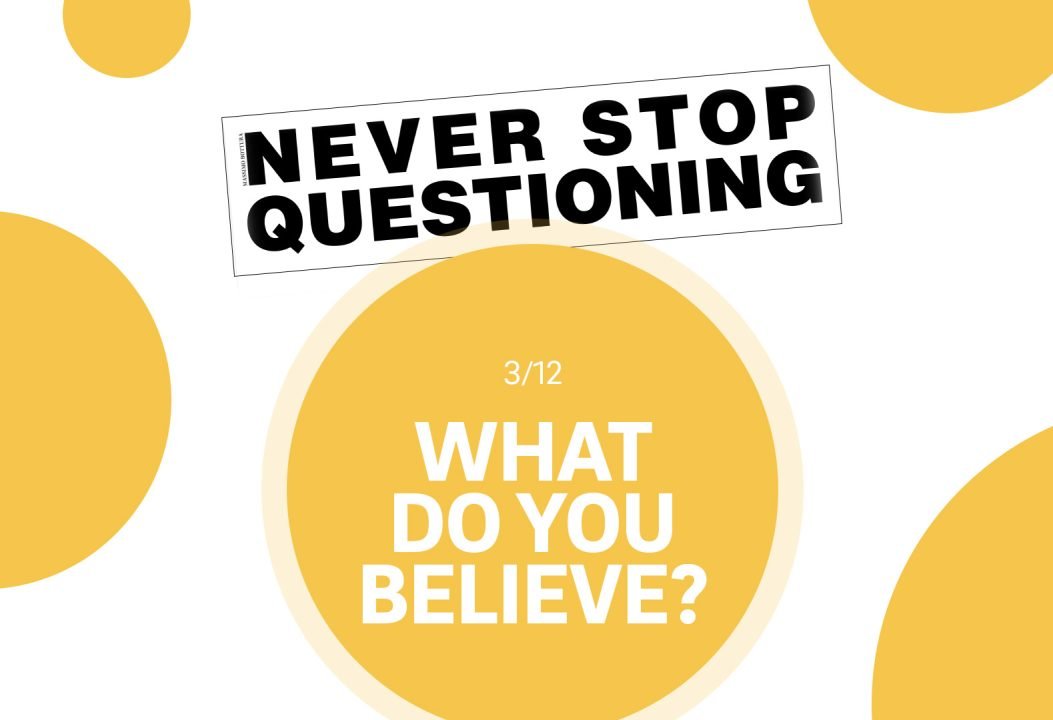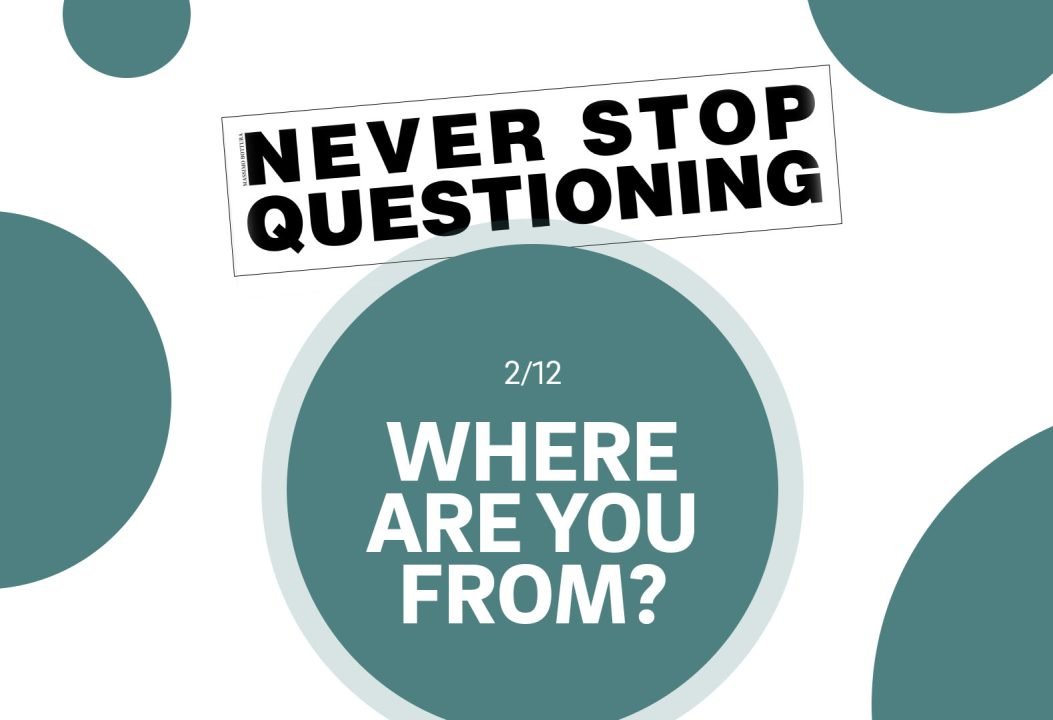Food for soul uses cookies strictly necessary for the proper functioning of the website, for its legitimate interest to enhance your online experience and to enable or facilitate communication by electronic means. To learn more about cookies please see our Cookie Policy
- About Us
- News and Stories
- News
- 40 under 40: much more than a prize

Elizabeth Richards, a young Professional Chef with a passion for food justice, is at the helm of the new Refettorio projects food model and initiatives. With a depth of knowledge and unwavering commitment to improve our food system, Elizabeth grew up in London and New York City gaining experience among those leading food security and assistance programs including her former post as Culinary Program Director and Director of Food at West Side Campaign Against Hunger. Since March, under her direction the Refettorio Harlem project has ramped up its food recovery efforts to save over 7400 pounds of fresh foods with partner Baldor, expanding the project’s sustainability goals into the day to day meal production by the Chefs’s Collective, producing over 10.000 meals for Harlem based community partners.
The Hunter College New York City Food Policy Center has released its annual class of New York City’s 40 individuals under 40 years old who are working to transform and improve the food system and we are proud to present you this talented young woman who works everyday to bring a diverse skill set and experience to create meal planning and recipes that are nutritious, seasonally balanced and eco-friendly for the environment.

Name: Elizabeth
Surname: Richards
Age: 33
Favorite dish: “Right now my favorite thing to eat is grilled summer vegetables with
olive oil, sherry vinegar, lemon zest, and flaky salt.”
1. Despite your young age, you are already an example of a leader for the younger generations who need a role model to follow. When did you start realizing that our food system needed to be transformed and improved and that you could do more?
Before I entered the non-profit culinary sector in 2016, I came from a catering and events background. The amount of waste generated in events was always startling to me and ultimately became a huge part of the reason I pivoted my career towards the non-profit sector. I remember one day I did an event as a freelance Chef for opening day of the American Baseball season. At the end of the event there was a huge amount of food leftover and in a rush to clean up and leave quickly, everyone around me was rapidly and mindlessly opening trash bags and throwing out the excess food. I stood horrified, almost paralyzed, while everyone around me quickly disposed of hundreds and hundreds of hamburgers and hot dogs. The waste itself was distressing but the part I found most shocking was how normal this seemed to everyone around me because the culture of excess and waste is so deeply embedded into the world of catering and events. This moment was a wake up call for me and made me realize that I needed to start working in food justice to improve the lives of workers, consumers and the health of the food system.
2. What are the most wasted foods you have witnessed at Refettorio Harlem? Can you give us a couple of examples of how food which is discarded can actually be transformed into healthy and nutritious meals? (it would be great if you could share a recipe prepared with the surplus food recovered by the Refettorio Harlem)
We are aiming to have a zero waste food model in the kitchen, however the most common waste I see produced in kitchens in general is the stems of vegetables. All of these stems can be used for various culinary purposes: soft stems from herbs like cilantro and parsley can be chopped or blended with the leaves; tougher stems like thyme and rosemary can be used to infuse oils or give flavors to stocks; stems from collard greens or kale can be chopped and sauteed with the leaves, roasted, pickled or blanched and used like celery. Broccoli stems, while typically discarded, are actually my favorite part of the plant. I frequently shave them and add them to salads but my favorite way to eat them is to chop and roast them with the florets to add a new texture and shape.
3. How do you think Refettorios could be a model to change the way people think about the food system?
The Refettorios are unique because of their core values: The Value of Hospitality, the Power of Beauty and the Quality of Ideas. These principles guide the operations of the Reffettorios and ensure that they not only improve the sustainability of the food system and give sustenance to those facing food insecurity, but that they do so while providing impeccable hospitality in a dignified and beautiful environment that is designed to bolster community. The Refettorios embody the spirit of the power of transformation as they seek to shine light on and excavate the hidden value of food, spaces and more. Food waste exists for many reasons but it is often because of the unrealistic aesthetic expectations of consumers that are upheld by vendors. So much food is discarded simply because it is imperfect. Refettorios show that imperfect food has inherent value and beauty which can be exposed through creativity and willingness. I believe that when people see the work and the impact of the Refettorios that it is impossible not to be inspired by the unlimited transformational potential of food. We hope that when guests Chefs come to Refettorio Harlem that they return to their kitchens energized to take steps to improve their sustainability without limiting the creativity or quality of their menus.
In addition, Refettorios not only rescue surplus food, but actively work alongside producers and vendors through conversation to improve the sustainability of their role in the food system. This means that Refettorios and mission aligned vendors and producers are not only working to divert food surplus from the system before it becomes wasted but actually work to change the system for the future.

4. What is the role of a Chef in creating a more sustainable food model? And what is that of other actors such as companies or public institutions in driving this change?
The role of the Chef is to take a mindful and conscientious approach to the sourcing and preparing of food. A Chef needs to first think about where their food comes from: what was the life of the animal like before it died and when it died; when and where is the food produced and what is it’s environmental impact; what is the carbon footprint of the food etc…The Chef needs to look at the answers to those questions and analyze how those decisions either reproduce unsustainable food practices or help improve the sustainability of the food system and adjust their menus, recipes and purchasing habits. The Chef then needs to refine their existing food procurement systems, or create new systems, that ensure that the ingredients ordered represent how much food is needed to ensure the success of their business without incurring unnecessary waste. Finally, the Chef needs to think about what to do with the ingredients and create recipes, dishes and menus that use every edible component of plants and animals.
The role of companies and public institutions is first to look honestly at their role in the food system. Questions they can ask themselves are: Do my operations create waste without taking steps to reduce it? What steps can be taken to reduce my waste? How do my operations reproduce and maintain unsustainable aspects of the food system? Do I work within seasons to promote the local food system and reduce the carbon footprint of your operations? Who can I reach out to for strategies and advice for integrating systems for waste reduction? Businesses and public institutions have the power to help influence, and either reinforce or change the expectations of the consumer. For example, in our globalized food system most consumers expect that they can purchase any ingredient at any time regardless of the season. If a business makes the choice not to sell a certain item out of the season that it is produced, or not to sell something at all that is produced unethically, the consumer will either slowly adjust their expectations or turn to another business. Businesses need to take a hard look at how they contribute to an unsustainable food system and determine if they want to work to improve the system or contribute to uphold the status quo. This is a hard decision to make as an individual business owner due to the economic challenges it presents, unfortunately the best choices from an environmental and ethical perspective are rarely the cheapest choices. It is also hard for a business to make sustainable choices when other businesses do not and can potentially attract their client population due to cheaper prices and expanded product availability. For this reason, it is essential that the government introduces legislation to both encourage and force businesses to make changes that promote the sustainability of the business and of the environment while helping to subsidize these changes so that they don’t disproportionately affect the access of low-income populations to healthy and sustainable food.
5. We firmly believe that people’s health is closely linked to that of the planet, and that the sustainability of one depends on that of the other. How can we all contribute to this balance, even from home? Could you give us 3 little tips that we can all follow on how to prepare a healthier and more sustainable dinner able to affect our food environment?
a) Make half of your plate seasonal and colorful fruits and vegetables.
b) Try to substitute animal proteins with plant based proteins whenever possible. If and when you eat animal proteins, try cutting back your portion size. Also, try and buy meat and fish that is ethically and sustainably farmed and caught. This meat and fish is significantly more expensive so it forces me to buy less and eat vegetarian more frequently!
c) Cook ‘nose to tail’ and ‘root to fruit’ and use every edible portion of your fruits and vegetables. Save bones and vegetable scraps to make soups and stocks. Homemade stocks are infinitesimally better than store bought stocks and allow you to extract the maximum value out of your ingredients. Making stock with animal bones is also a further way to honor the animal that has died for your meal. When you maximize the culinary value of an animal by cooking ‘nose to tail’ then you can truly say that it died for a purpose.
d) Plan your meals in advance and shop with a grocery list. If you have an intention for every ingredient you purchase, you are much less likely to create waste.
6. What does it take to become a Food System Changemaker? How can we create a ripple effect and we can influence the people around us to do the same?
Being a changemaker means constantly challenging yourself to think outside of the box and question the status quo. It means not only seeing a problem but finding a solution. The best changemakers work from the ground up to build awareness, convert awareness into behavioral changes, and empower others to join the fight for change. Once a belief becomes a movement, then it is less possible to ignore and more likely to have impact. A changemaker will also persevere in the face of obstacles and continue fighting for change even when victories are achieved.
A ripple effect can be created by showing enthusiasm for change, starting with baby steps by demonstrating simple strategies to create change that is easy for individuals and businesses to integrate, and documenting and showing impact. Once people start to see that small changes can result in big changes on both the environmental and economic level then the idea will start to take hold.
I find that it is easy to influence or encourage people to become amenable to increasing their sustainability when you approach it from various perspectives. For example, some people may not be motivated by environmentalism but may be motivated by the economic benefits of increasing sustainability. You have to understand what limitations someone might have, what motivates someone to change their behavior and realize that one size does not fit all with people and all of their amazing uniqueness.
7. We always say that Cooking is an Act of Love…Could you explain to us why and if you feel the same?
In its essence, cooking is feeding people and what greater act of love is that. The food feeds the body and sustains its livelihood, but the act of cooking and the ideas that are shared and the community that is built and nurtured around plates of food sustains the soul.
Cooking as an act of love can also be viewed from an environmental perspective. When we cook with a mindful approach to sustainability we are showing love to the planet.
News and Stories
Your Gift Will Help Us Make A Difference Today
Would you help us create a socially inclusive world where no food is wasted, communities are food sufficient and have the tools to thrive?



